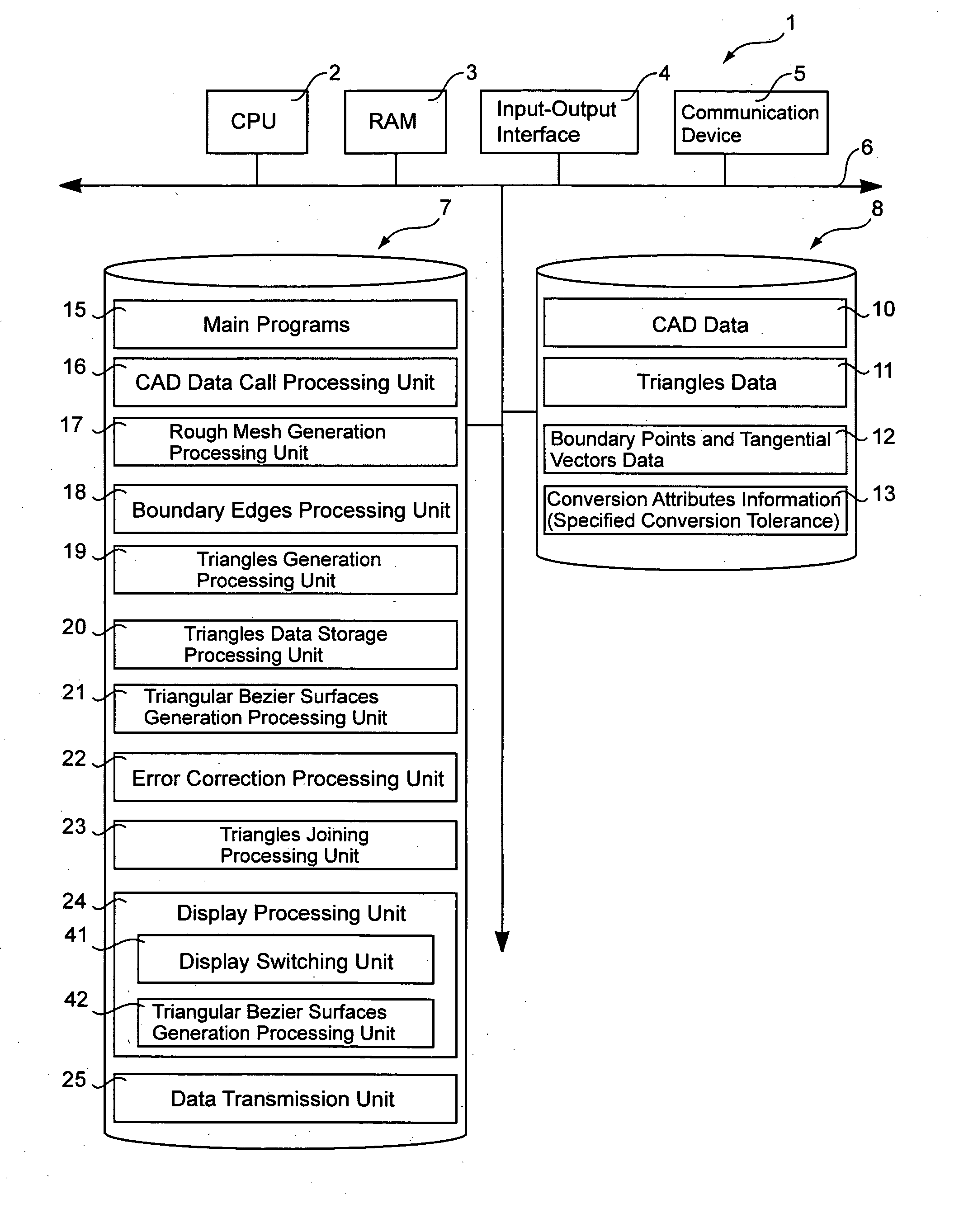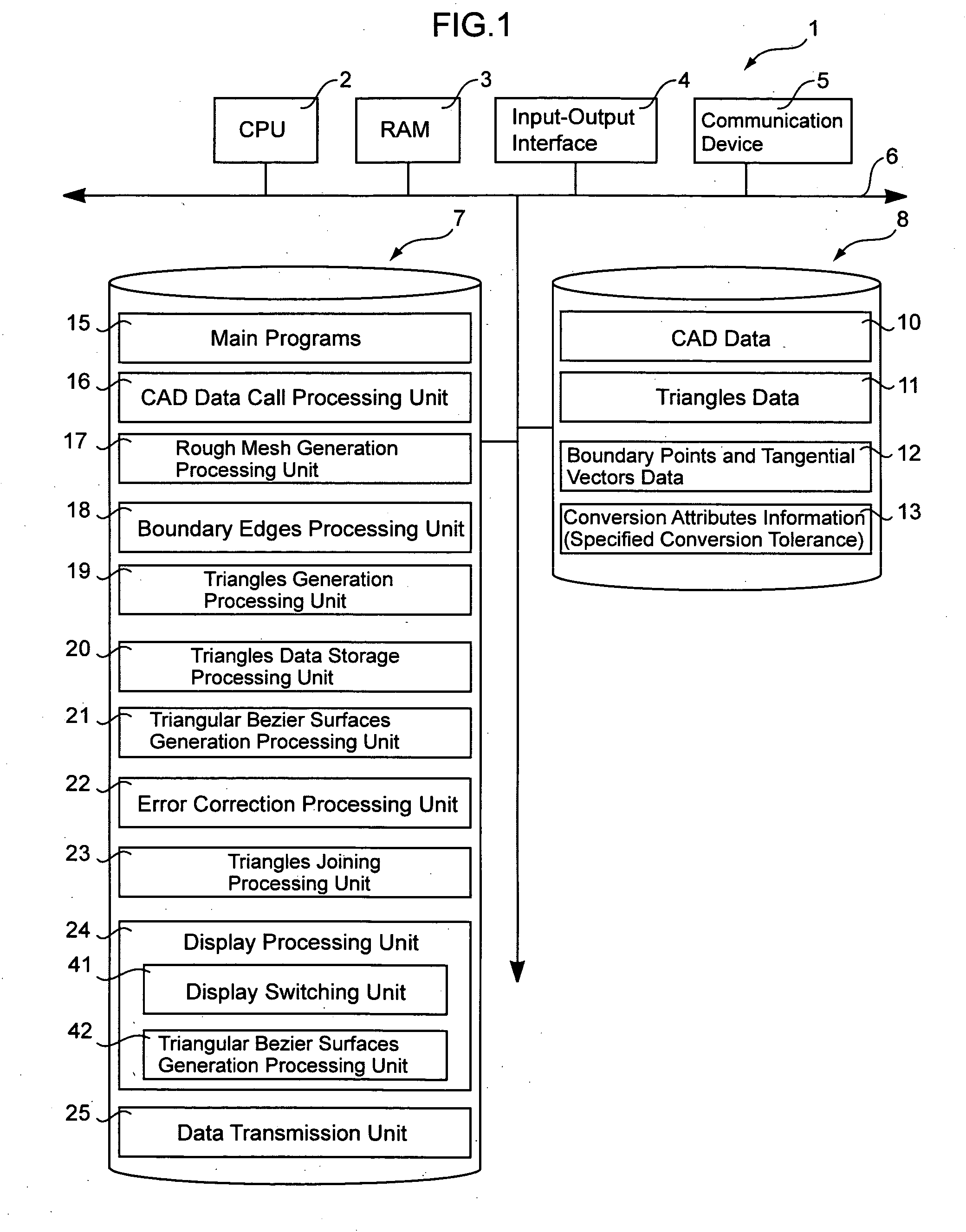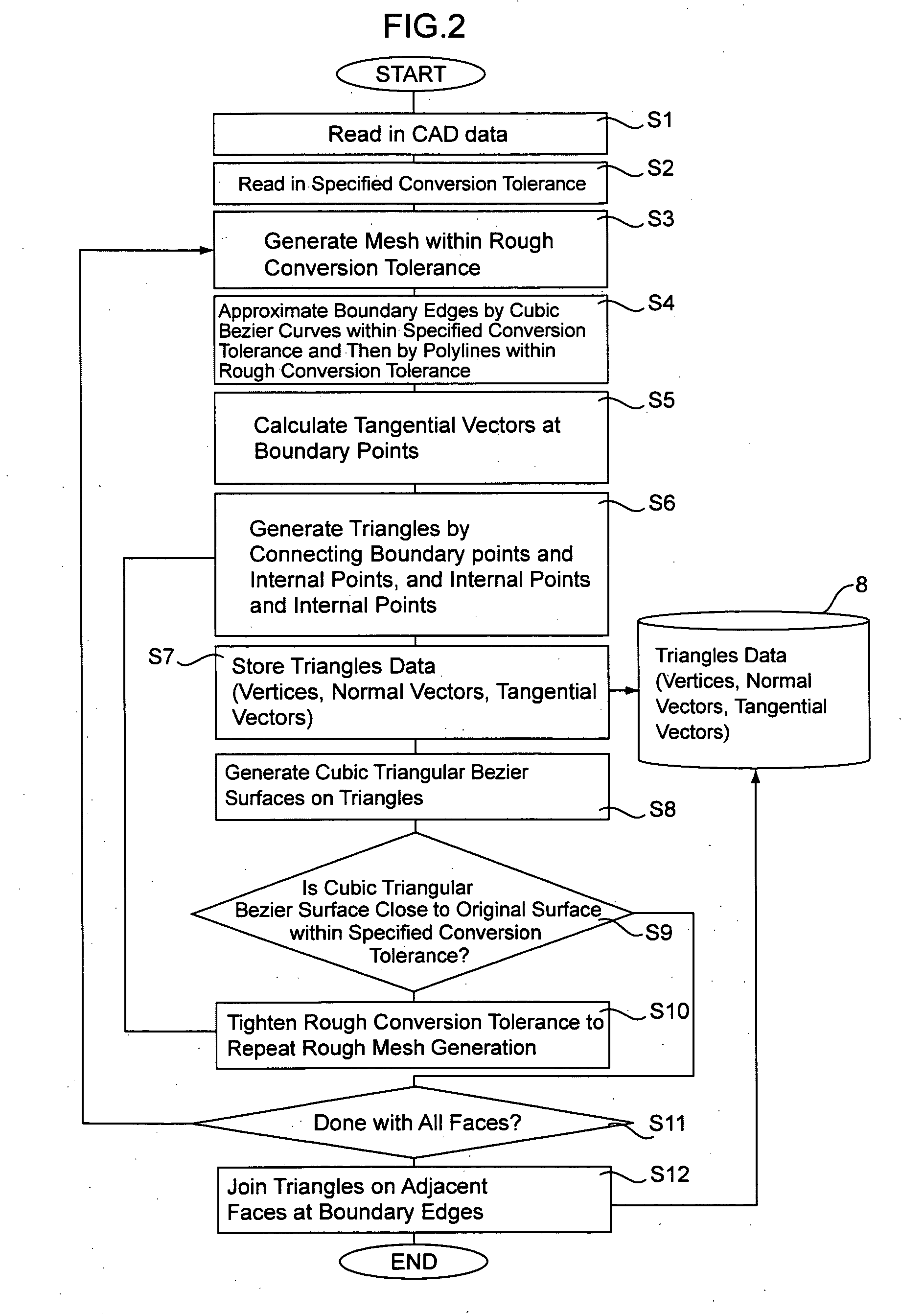Method for approximating and displaying three-dimensional cad data, and method thereof
a technology of three-dimensional cad data and computer software, applied in the field of system, method and computer software program for approximating and displaying three-dimensional cad data, can solve the problems of data duplicate, data that cannot be read in a massive amount, and the pc with microsoft windowsTM normally has a limited capacity of 2 gb, and achieve the effect of detailed display
- Summary
- Abstract
- Description
- Claims
- Application Information
AI Technical Summary
Benefits of technology
Problems solved by technology
Method used
Image
Examples
Embodiment Construction
[0023] Embodiments of the present invention are described below with reference to the accompanying drawings to facilitate understanding of the present invention.
[0024]FIG. 1 is a block diagram showing a computer system 1 according to one embodiment. In the computer system 1, a CPU 2, a RAM 3, an input-output interface 4, a communication device 5, a program storage unit 7, and a data storage unit 8 are connected to a bus 6.
[0025] As shown in this figure, the data storage unit 8 stores CAD data 10 to be processed, triangles data 11 generated through the processing method according to the present embodiment, boundary points and tangential vectors data 12 generated through the processing method according to the present embodiment, and conversion attributes information 13 such as a specified conversion tolerance.
[0026] The program storage unit 7 stores main programs 15 such as an OS, a CAD data call processing unit 16, a rough mesh generation processing unit 17, a boundary edges proce...
PUM
 Login to View More
Login to View More Abstract
Description
Claims
Application Information
 Login to View More
Login to View More - R&D
- Intellectual Property
- Life Sciences
- Materials
- Tech Scout
- Unparalleled Data Quality
- Higher Quality Content
- 60% Fewer Hallucinations
Browse by: Latest US Patents, China's latest patents, Technical Efficacy Thesaurus, Application Domain, Technology Topic, Popular Technical Reports.
© 2025 PatSnap. All rights reserved.Legal|Privacy policy|Modern Slavery Act Transparency Statement|Sitemap|About US| Contact US: help@patsnap.com



